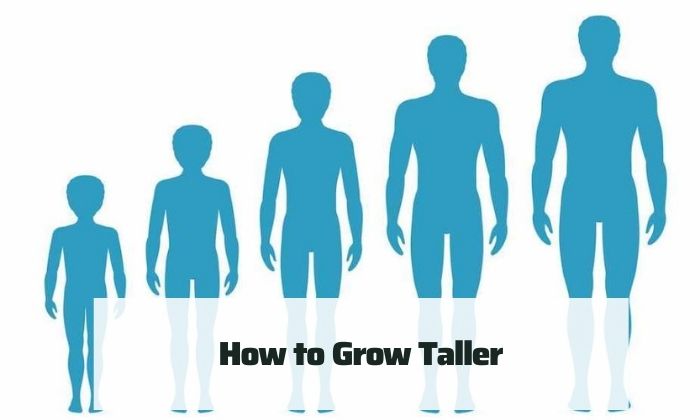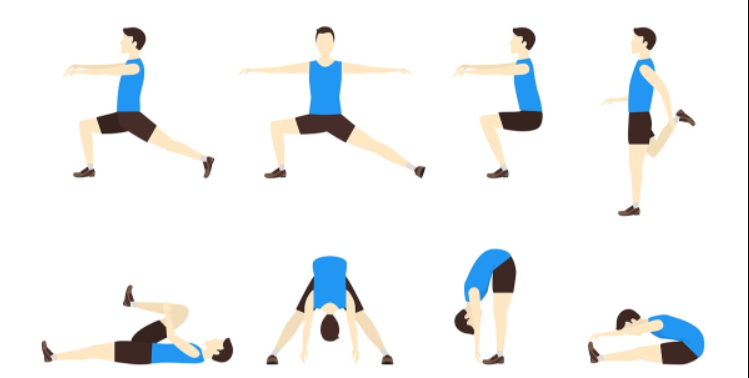How to Grow Taller – Ways To Increase Your Height

Throughout history (and even now), physicians, companies, and inventors have allegedly offered treatments to increase a person’s height. So, how to grow taller? Are there any methods that can actually help you grow taller? To find out, read this article.

General information about height
Your overall height is determined by a number of factors. Genetic factors are thought to account for 60 to 80 percent of your final height. The remaining percentage is usually accounted for by environmental factors such as nutrition and exercise.
Most people gain about 2 inches in height each year between the ages of one and puberty. When you reach puberty, you may grow at a rate of 4 inches per year. Everyone, however, develops at a different rate.
This growth spurt typically begins in the early adolescent years for girls. Boys may not notice this sudden increase in height until they are in their late teens.
When you reach puberty, you usually stop growing taller. This means that as an adult, you are unlikely to grow taller.
However, there are some things you can do throughout adolescence to ensure that you’re maximizing your growth potential. You should keep doing these as an adult to maintain your height and overall well-being.
How to Grow Taller
1. Eat a balanced diet
It is critical that you get all of the nutrients your body requires during your growing years.
You should eat the following foods:
- new fruits
- vegetables
- grains
- proteins
- dairy
You should limit or avoid eating foods that contain:
- Saturated fats
- trans fats
- sugar
Increase your calcium intake if an underlying medical condition or advanced age is causing your height to decline by affecting your bone density. Women over the age of 50 and men over the age of 70 are often advised to consume 1,200 milligrams (mg) of calcium per day.
Vitamin D is also beneficial to bone health. Tuna, fortified milk, and egg yolks are all good sources of vitamin D. If you aren’t getting enough vitamin D from your diet, consult your doctor about taking a supplement to meet your RDA.
2. Use supplements with caution
Supplements may be appropriate in a few cases, such as increasing height in children and combating shrinking in older adults.
For example, if you have a condition that impairs your production of human growth hormone (HGH), your doctor may advise you to take a supplement containing synthetic HGH.
In addition, to reduce their risk of osteoporosis, older adults may want to take vitamin D or calcium supplements.
In all other cases, you should avoid supplements that make height promises. There is no way to increase your height once your growth plates have fused together, regardless of what the supplement label claims.

Short-term sleep deprivation will not affect your height in the long run. However, if you consistently sleep less than the recommended amount during adolescence, it can lead to complications.
This is due to the fact that your body produces HGH while you sleep. If you don’t get enough sleep, the production of this hormone and others may decrease.
It is proposed that:
- Newborns up to three months old get 14-17 hours of sleep per day, while infants aged three to eleven months get 12-17 hours.
- Toddlers aged 1-2 years receive 11-14 hours of sleep per day.
- Children aged 3-5 years old receive 10-13 hours of sleep per day.
- Children aged 6 to 13 receive nine to eleven hours of sleep per day.
- Teenagers aged 14 to 17 receive eight to ten hours of sleep per day.
- Adults aged 18 to 64 receive seven to nine hours of sleep per day.
- Senior citizens aged 65 and up get seven to eight hours of sleep per night.
Extra sleep may even increase HGH production, so take advantage of that power nap.
4. Stay active
Regular exercise has numerous advantages. It strengthens your muscles and bones, aids in weight maintenance, and stimulates HGH production.
Children in school should get at least an hour of exercise a day. They should concentrate on the following during this time:
- Pushups and situps are examples of strength-building exercises.
- Yoga, for example, is a form of flexibility exercise.
- Aerobic activities, such as playing tag, jumping rope, or biking, are examples of aerobic activities.
Exercising as an adult has its advantages as well. It can help you maintain your overall health while also lowering your risk of osteoporosis. This condition develops when your bones become weak or brittle, resulting in a loss of bone density. You may “shrink” as a result of this.
To reduce your risk, try walking, tennis, or yoga several times per week.
5. Practice good posture
Poor posture can make you appear shorter than you are. Slumping or slouching can also affect your actual height over time.
Your back should naturally curve in three places. If you slump or slouch frequently, these curves may shift to accommodate your new posture. This can result in neck and back pain.
It is critical to be aware of how you stand, sit, and sleep. Consult your doctor about incorporating ergonomics into your daily routine. Depending on your requirements, a standing desk or memory foam pillow may be all you need to improve your posture.
You can also do exercises that will help you improve your posture over time. Consult your doctor if you’re unsure where to begin. They can assist you in developing an exercise routine that is appropriate for you.
If targeted posture exercises aren’t your thing, consider trying yoga. This full-body practice can help you strengthen your muscles, align your body, and improve your posture. This will enable you to stand taller.
Yoga can be practiced in the privacy of your own home or in a group setting at your local gym or studio. If you’re not sure where to begin, look up a beginner yoga routine on YouTube.
Some popular posture-improvement poses include:
- Mountain Pose
- Cobra Pose
- Child’s Pose
- Warrior II Pose
The bottom line
In most cases, you reach your peak height by the end of puberty. Although there are things you can do to maintain this height as an adult, your growing years are over. See more useful article at my website y2kcenter.org




